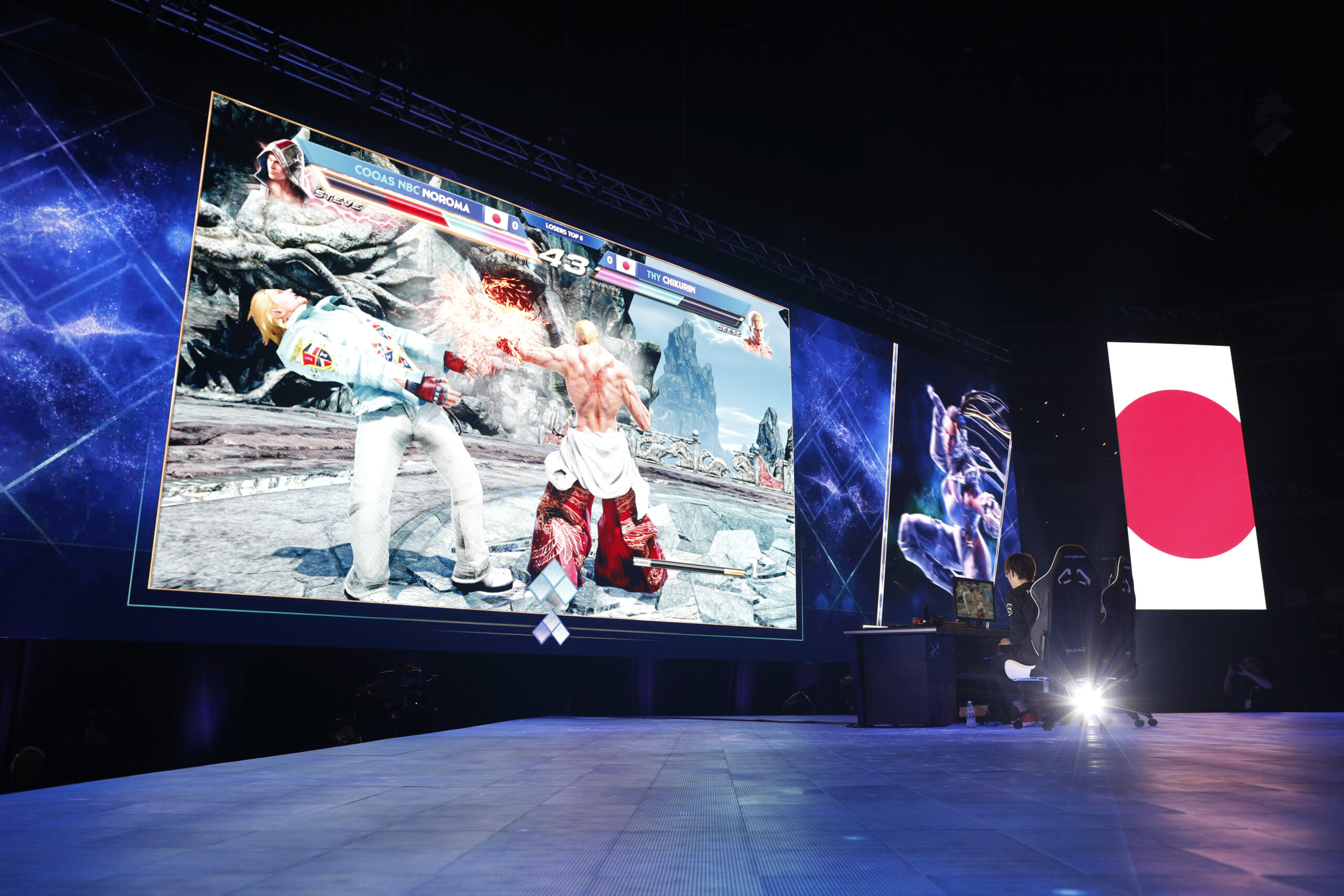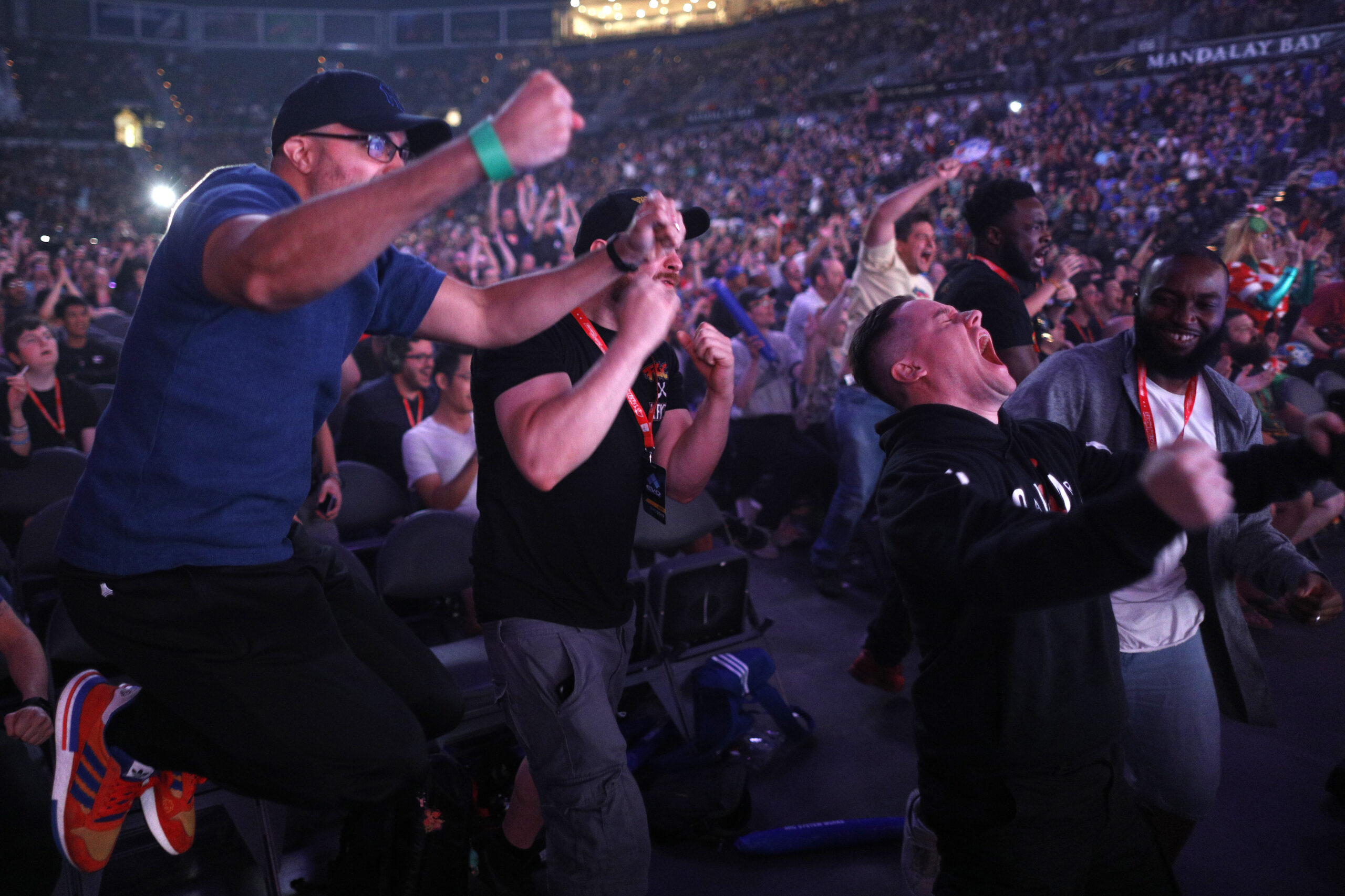Esport Business Summit: FGC State of the Union
EVO Fighting Game Tournament at Mandalay Bay in Las Vegas, NV (Photo by Joe Buglewicz/Getty Images)
On the September 12th, the Esports Business Summit in Las Vegas, hosts a panel that will explore the present and future of the Fighting Games Community. If you are unfamiliar with the FGC is the collection of Fighting games that played professionally. Street Fighter, Mortal Kombat, Smash Bros. and Tekken are just some of the major franchises that power the genre forward.
In this “State of the Union” industry thought-leaders such as Allen Bunney, CEO of esports team Panda Global, Ryan Gutierrez of Cross Counter TV and Karim Farghaly Director of Business Development at Bandai Namco will discuss the present and future of the diverse scene.

What Does The FGC Look Like Today?
Fighting games helped create the foundation of esports and professional gaming as far back as the early 90’s. Capcom, makers of Street Fighter, were already having sponsored tournaments for the game as far back as 1991. The FGC is often hailed as the first true esports “scene” and many of its founding fathers like Alex Valle, John Choi and Seth Killian are still involved in the FGC today.
Fighting games, as a product, are seeing a true renaissance. EVO, the largest fighting game event in the world, saw its largest viewership numbers and prize pools ever in 2019. The release of Mortal Kombat 11 and Samurai Shodown added to an already robust line-up of games. Nintendo’s decision to finally support Smash Bros. through official tournaments gave
Smash Ultimate the validity it truly needed upon release in 2018. And when we talked to FGC veteran and EVO Champion, Justin Wong, he highlighted the exciting, new wave of talent coming into the space like Dominique “SonicFox” McLean and Victor “Punk” Woodley. Its a truly heartening time to get into the fighting games. We’ve come a long way from EVO Moment #37 that’s for sure.
However, everything isn’t all sunshine and rainbows. When it comes to prize pools, the FGC sees purses a fraction of the size of other esports. The League of Legends World Championship in 2018 saw a prize pool about $6.5 Million for the winning team. Dwarfing the largest prize in the FGC, the Capcom Cup, which disbursed $250k in 2018. All of it pales in comparison when placed against outliers like the $30 Million Fortnite World Cup and nearly $35 Million DOTA’2s The International. Other esports have grown through free-to-play models, fostering massive revenue streams of lootboxes and microtransactions.
The FGC apparatus has yet to address this in a meaningful fashion. It becomes especially frustrating for FGC fans to see games like Farming Simulator (which is exactly what it sounds like) pull down 200k+ for its esports scene that has a modicum of the legacy that the FGC does. So how does the genre move forward?
What Could It Look Like In The Future?

The while the slow adoption of microtransactions may be a current issue, the future looms even more question marks. One possible solution is for some fighting games to adopt a “free-to-play” model where the base game is free but you purchase the characters you want. Although many esports like League of Legends and Fortnite saw success with this structure, fighting games are built on “going to the lab” with every character. Hitting practice mode and sparring against others to learn every characters “match-ups”. Placing even day one characters behind a pay wall may cause a drop in play or even worse make the genre cost prohibitive for some players.
If the free-to-play model is coming costumes and characters have to be reduced in price. MOBAs like League of Legends and DOTA can boast north of 100 characters with all varying prices with frequent sales on characters. Fighting games can take this model, make it cheaper, and make it more palatable to the FGC consumer. The current season pass model has seen its detractors. Mostly because its asking an additional $10-$25 on top of a $60 game for characters/costumes you aren’t even sure you will like. MOBAs will usually cycle free characters for you to use, so I don’t see why fighting games can’t make some DLC fighters free to try at some point as well.
The FGC Is A Special Part Of Esports

There is one thing the FGC has that every other scene has yet to figure out. Charisma. There is a reason why All Elite Wrestling partnered with CEO Gaming to put on a dual FGC/Wrestling event in 2019. Fighting game professionals are damn fun to watch. Rivalries are the lifeblood of the FGC, trash talk and taunting are lauded. Seeing SonicFox and Goichi “Go1” Kishida battle it out over a year in Dragonball Fighterz was must see TV. Or watching Saul Leonardo “MenaRD” Mena take down living legend Hajime “Tokido” Taniguchi to win the 2017 Capcom Cup was one of the most emotional moments in all esports.
The FGC is the closest thing that esports has to boxing or MMA. And that business still pulls in millions of dollars. Leaning into the drama of the FGC is a way to get the paragons of the scene out there. Its the esport that requires the least amount of explanation on its surface. And the energy surrounding its big events is unlike any other in esports. With more investments some of esports’ truly transcendent stars could come from the FGC. Its just a matter of making the events match the giant personalities.
Related Stories:
Interview With FGC Pro Justin Wong
Samantha “Persia” Hancock Founder of XO Academy
EVO 2019 Championship Sunday & Final Results
Follow Checkpoint XP on Twitter, Facebook, and Instagram!
Checkpoint Daily is Monday through Friday, starting at 4:00 p.m. ET, at Twitch.tv/CheckpointXP. Be sure to follow, turn on those notifications, and subscribe!
